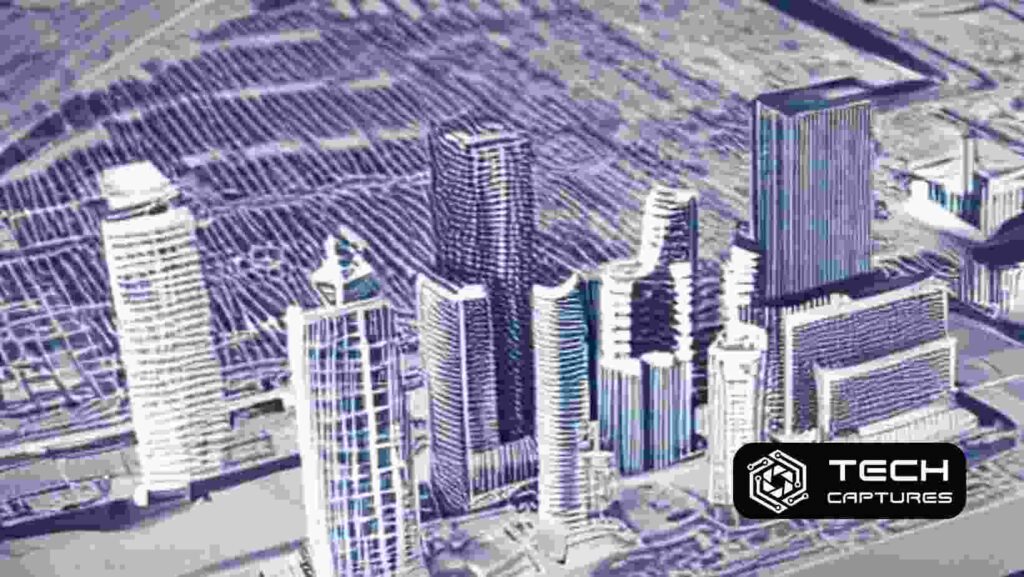The architectural world is undergoing a significant change due to the ever-increasing role of technology. This evolution goes beyond digital drawing tools and introduces the concept of Artificial Intelligence (AI). AI has the potential to revolutionize all aspects of architectural design and planning, from developing conceptual ideas to optimizing building performance. In this article, we will explore the various ways in which AI is transforming architectural processes and highlight its profound impact on the future of the built environment.
Table of Contents
Understanding Artificial Intelligence in Architecture
Artificial Intelligence (AI) is revolutionizing architecture! This research focuses on how AI tools and algorithms are changing design workflows, from optimizing layouts to stimulating creativity.
“Artificial intelligence will be the next major tool in the architect’s toolbox, enabling us to go beyond designing static spaces to creating dynamic, responsive environments.” – Bjarke Ingels, Danish architect.
What is AI and How Does it Apply to Architecture?

Artificial Intelligence (AI) refers to the development of intelligent systems that can mimic human cognitive functions such as learning, problem-solving, and decision-making. In the field of architecture, AI is revolutionizing the design and planning processes by offering licensed architects a powerful new set of tools. These AI algorithms and machine learning techniques can analyze vast amounts of data, identify patterns, and make informed predictions, enabling architects to:
● Optimising building layout and design: AI can analyze user behavior, environmental data, and building parameters to create efficient and functional layouts, freeing up the licensed architect’s time to focus on the creative and strategic aspects of design.
● Automation of repetitive tasks: AI assistants can perform routine tasks such as code compliance checks and material selection, allowing licensed architects to dedicate their expertise to higher-level design decisions.
● Generate design options: AI tools can explore a wider range of design possibilities, allowing architects to compare and select the most optimal solutions while complying with regulations and codes.
However, there are also challenges to integrating AI into workflows. These include:
● Data dependency: The effectiveness of AI is highly dependent on the quality and quantity of the data it is trained on.
● Ethical considerations: Biases in AI algorithms can affect design outcomes, requiring licensed architects to select and monitor AI tools carefully.
● Role of the architect: AI should be viewed as an assistant, not a replacement. Human creativity and experience, honed by years of training and licensing, are still important for successful architectural design.
The Evolution of Architectural Design with AI

The integration of artificial intelligence into architectural practice has a relatively short but significant history. The first attempts involved expert systems for analyzing building codes. Today, advances in machine learning and deep learning have opened up a world of possibilities for licensed architects:
● Generative design algorithms can create innovative and sustainable design solutions based on defined parameters, allowing architects to explore more design options within regulatory constraints.
● Advanced 3D modeling tools use AI to improve visualization and create realistic simulations, helping licensed architects present design concepts to clients and stakeholders.
● AI-based structural analysis software optimizes building designs for strength and efficiency, freeing architects to focus on overall intent and user experience.
“AI has the potential to revolutionize the architectural design process, allowing architects to explore countless design options and optimize their creations based on complex data and user preferences.” – Sir Norman Foster, British architect.
These advances are reflected in cutting-edge architectural projects around the world. For example, the Dubai Airport expansion project uses artificial intelligence for energy-efficient climate management, demonstrating the potential of AI to contribute to sustainable design in the architectural field. Similarly, AI-powered urban planning tools are being used to create smarter and more sustainable cities, requiring collaboration between licensed architects, urban planners, and AI specialists.
AI Tools and Technologies in Architectural Design
The architectural toolkit now includes a number of powerful artificial intelligence tools that licensed architects can easily master:
● Generative design platforms allow architects to specify parameters and derive multiple design options based on AI algorithms, speeding up the design process.
● Parametric modeling software uses AI to create dynamic models that adapt to changing design requirements, ensuring compliance with building codes.
● Building performance optimization tools use AI to analyze energy consumption, daylighting, and other factors, leading to sustainable design choices that licensed architects can implement in their projects.
These tools enhance architectural design in several ways:
● Creativity: AI facilitates the exploration of a broader design space, stimulates new ideas, and fosters innovation, which is nevertheless ultimately driven by the vision and creativity of the licensed architect.
● Efficiency: Automating repetitive tasks and data-driven decision-making saves architects time and resources, allowing them to focus on core aspects of design and client communication.
● Sustainability: AI helps design environmentally responsible buildings and optimize the use of resources, which is in line with the growing emphasis on sustainable design practices in the architectural profession.
The Impact of AI on Architectural Planning and Urban Development
AI is changing not only the design of individual buildings but also the planning of entire cities. AI-based solutions are now being used in various aspects of urban planning, requiring the collaboration of licensed contractors, urban planners, and AI specialists:
● Urban planning: AI algorithms analyze traffic patterns, land use data, and environmental factors to create efficient and sustainable urban layouts, informing urban planners and architects about planning decisions.
● Spatial analysis: AI-powered tools analyze existing urban environments and identify areas for improvement or development, providing valuable data for urban planning initiatives and architectural projects.
● Infrastructure design: AI simulators can predict traffic flows, energy consumption, and other factors to help design efficient infrastructure systems integrated into the overall urban design concept.
Looking to the future, AI has the potential to solve some of the most pressing urban problems:
● Sustainability: AI tools can help design cities that are more energy efficient and minimize environmental impact.
● Resilience: AI modeling can help develop urban infrastructure that can withstand natural disasters and climate change.
● Equitable development: AI can analyze data on demographics and social needs to create urban environments that are inclusive and provide equal opportunities for all residents.
“The integration of AI into architecture holds the promise of creating smarter, more efficient buildings that respond intelligently to their occupants’ needs, ultimately enhancing the quality of life and well-being.” – Rem Koolhaas, Dutch architect.
This integration of AI marks a new era in architectural design and planning. Despite the challenges that remain, AI’s potential benefits are immense, paving the way for a future where architects can create innovative, sustainable, and resilient environments.
Conclusion
The integration of artificial intelligence into architecture is opening up a new era of design possibilities. AI tools simplify workflows, optimize projects, and stimulate creativity. Despite ongoing data management and ethical challenges, architects who embrace AI as a partner can create sustainable, efficient, and inspiring environments.
The future of architecture lies in utilizing the power of artificial intelligence while maintaining an invaluable human approach.

